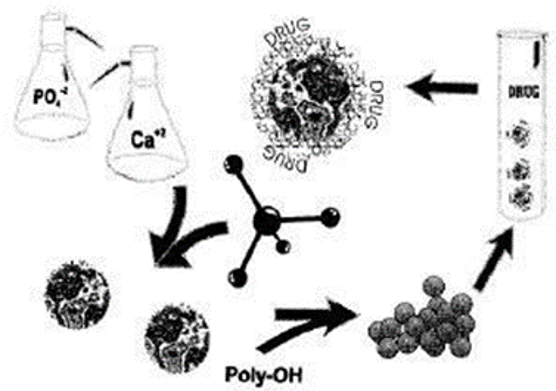Abstract
Aquasomes are one of the most recently developed delivery systems; these are nanoparticulate carrier systems with three-layered self-assembled structures. They comprise a central solid nanocrystalline core coated with poly- hydroxyoligomers onto which biochemically active molecules are adsorbed. Three types of core materials are mainly used for producing aquasomes: tin oxide, nanocrystalline carbon ceramics (diamonds) and brushite (calcium phosphate dihydrate). Calcium phosphate is the core of interest, owing to its natural presence in the body. The brushite is unstable and converts to hydroxyapatite upon prolong storage. Hydroxyapatite seems, therefore, a better core for the preparation of aquasomes. It is widely used for the preparation of implants for drug delivery. The solid core provides the structural stability, while the carbohydrate coating protects against dehydration and stabilizes the biochemically active molecules. This property of maintaining the conformational integrity of bioactive molecules has led to the proposal that aquasomes have potential as a carrier system for delivery of peptide, protein, hormones, antigens and genes to specific sites.
Full text article
Authors

This work is licensed under a Creative Commons Attribution-NonCommercial-NoDerivatives 4.0 International License.

